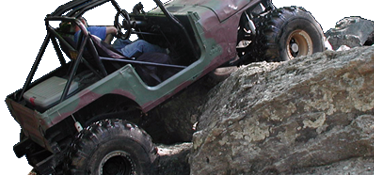a_kelley
mechanical fixer
- Joined
- Jan 26, 2010
- Location
- Rutherfordton
Yep. The early model crank meant like 70s.
So now the question would be do I go 8.8.1 cr or higher? Russ said he would get back to me in a little bit but advised against running 8.8.1 die to it being to low. Just want to hear your thoughts
So now the question would be do I go 8.8.1 cr or higher? Russ said he would get back to me in a little bit but advised against running 8.8.1 die to it being to low. Just want to hear your thoughts
No matter what anybody tells you. Listen only to Russ, he will explain every thing to you. And you will have one helluva engine.

Any engine does better with more compression, but you may have to run different fuel to keep it happy. Like 18:1 needs diesel
I read that the 4.0 has an issue with early detonation with the higher compression
I prefer to run 89 bc it’s non ethanol
-12 cc@Jody Treadway - what cc pistons did you use on this last one?
I prefer to run 89 bc it’s non ethanol.
Are you sure about that? I thought 89 was just a blend of the high test and regular tanks.
Around here 89 octane doesn't mean its non-ethanol, but non-ethanol is almost guaranteed to be 89 octane.My understanding was mid-grade was just super and regular mixed together.
I have noticed that the few stations around Raleigh that offer Ethanol free gas, tend to stock it in Mid-grade.
That has to do with hot spots in the combustion chamber of the iron head. Iron heads require lower compression than aluminum heads in order to run lower octane fuel.
Deburring and polishing the chamber helps prevent hot spots that cause preignition of the fuel/air before the plug fires. This is detonation, preignition, ping, spark knock, etc.
You have to balance the CR with the fuel used.
The higher the CR the more power available out of the same displacement.
Higher CR needs higher octane fuel, that is slower to ignite. Higher octane means less oxygen in the fuel itself.
Less oxygen in the fuel means less power out of the fuel itself.
The increase in power from a raised CR is greater than the loss in power from the fuel with a higher octane.
Decking the block or head can increase the CR and increases the quench and squish.
Dishing the piston can reduce the CR.
A domed piston can increase the CR.
A thinner head gasket increases the CR. Thicker is opposite.
Here is one trick.
Getting the quench height correct, will increase squish and more thoroughly mix the air/fuel in a more turbulent chamber.
This equates to less detonation while creating the most power per the fuel, all while decreasing the need for more advanced ignition timing.
This keeps the ignition from having a slight negative push on the piston as it moves towards the top of the stroke at tdc.
Also means you can get away with the most CR per fuel choice, when the quench is optimized and the squish is beneficial.
Now is it worthwhile to have custom pistons machined to your spec, that’s up to you.
You may want to use the parts readily available to you based on what fuel you want to run.
It’s similar to pick a tire size choice and build axles around that, that fits your budget and usage.
Decide on what fuel (s) you want to run, and see which parts get you to your goal in the best way for you.
Are you sure about that? I thought 89 was just a blend of the high test and regular tanks.
Most of the Marathons around the Hendo, Brevard, Mills River area have it too.Yeah around the Foothills and mountains, the 90 REC is non ethanol.. REC - reduced ethanol content.. and yes it does get better mileage and higher boiling point. It used to be only sold in areas with lower population density or so many miles from a city of such density or some such like. They may have changed that law as this station is in Hendersonville proper.
View attachment 298382
That just gave me a headache. The more I read about this the more I think I just need to pay to play.....
-24-12 cc
So now the question would be do I go 8.8.1 cr or higher? Russ said he would get back to me in a little bit but advised against running 8.8.1 die to it being to low. Just want to hear your thoughts

